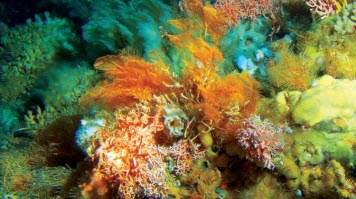10. What Are Some Environmental Impacts from Dispersant Use?
Both dispersants and dispersed oil particles are toxic to some marine organisms. But because concentrations of dispersed oil are quickly diluted in the ocean, organisms are likely to be exposed only for short time periods. To try to understand how badly marine organisms might be harmed by dispersant application operations, researchers conduct experiments with specialized laboratory equipment.
In any particular situation, the decision to use dispersants involves balancing the potential advantages of dispersant use--removing oil from the water surface and avoiding some shoreline impacts--with the potential disadvantages, such as impacts to plankton or other water column organisms. Part of the work of planning the response to potential oil spills is the difficult task of evaluating these tradeoffs, which requires careful consideration of the resources and issues involved.

Because coral reefs can be harmed by dispersed oil, dispersant use in the vicinity of coral reefs is usually restricted to areas where dispersed oil is unlikely to contact coral. These are areas far from the reefs, or located where currents would carry the dispersed oil away from the coral.
More Information about Environmental Impacts
Introduction to Coastal Habitats and Biological Resources for Spill Response: For more information about dispersant and oil toxicity, check Chapters 2 and 5 of this training manual.
